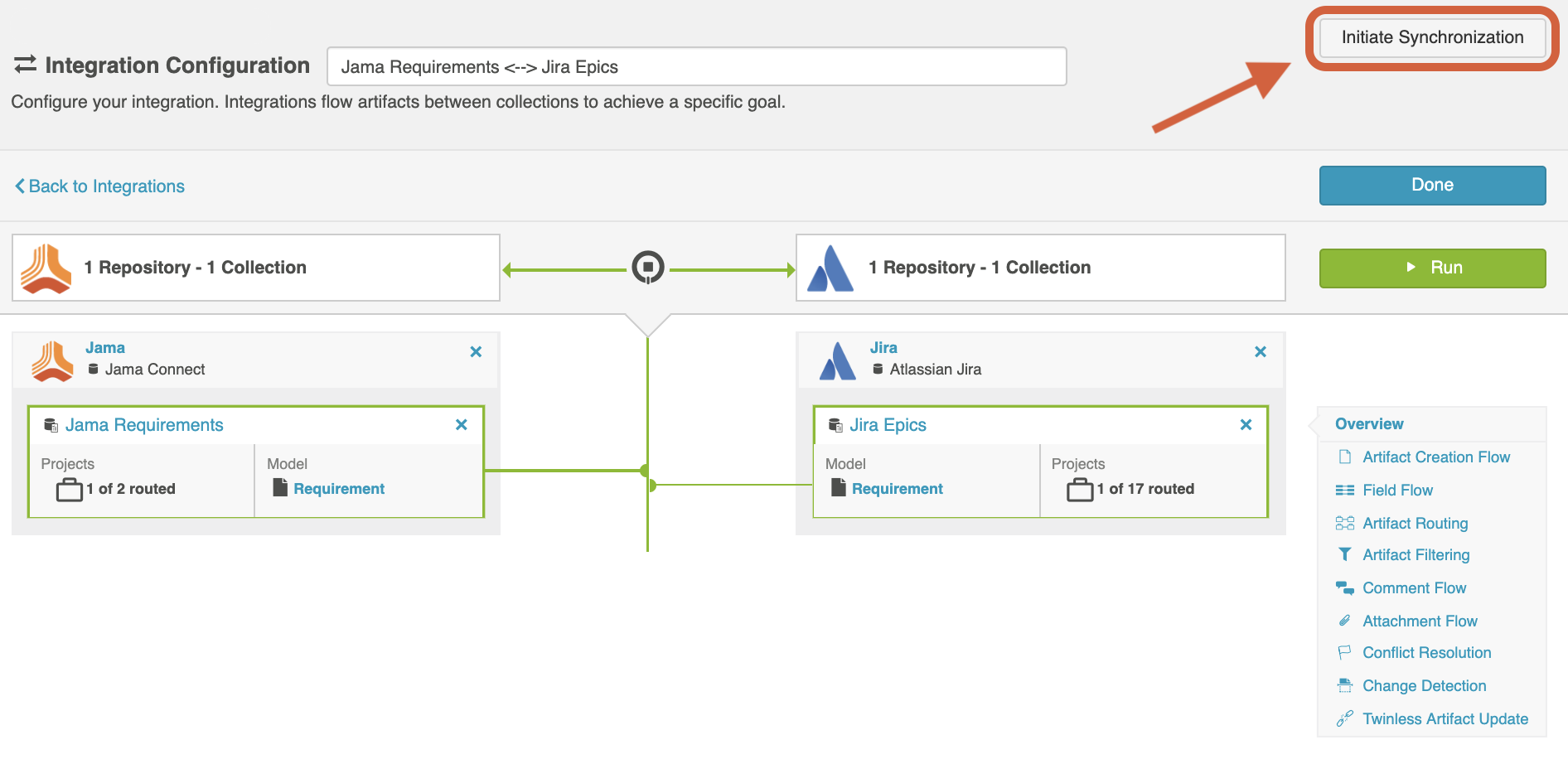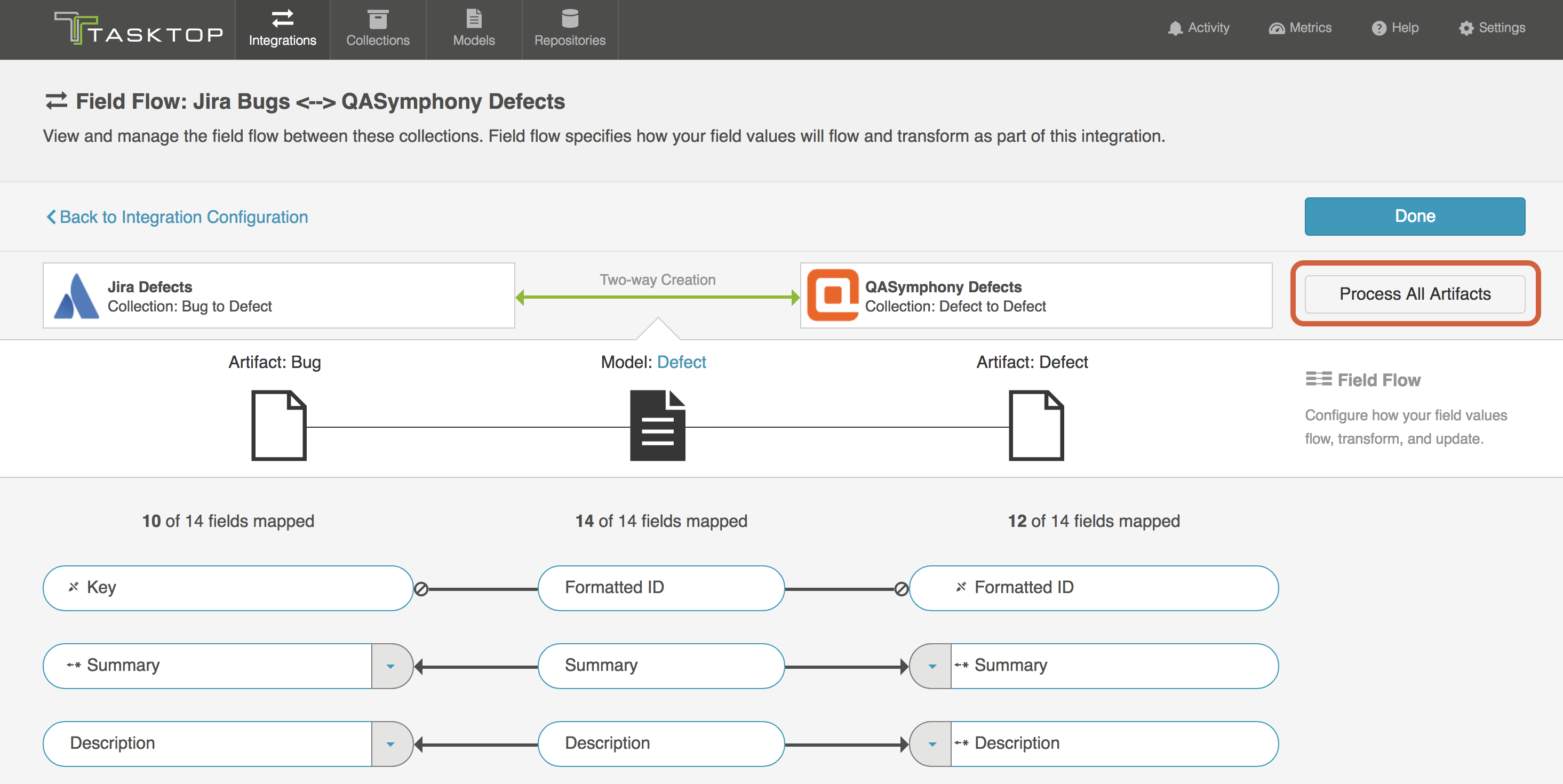What is the difference between 'Process All Artifacts' and 'Initiate Synchronization'?
- Last updated
- Save as PDF
Last Updated: | Applicable Hub Versions: 19.3 and later
Answer
Initiate Synchronization
The 'Initiate Synchronization' button (present on the integration configuration screen) should be used in cases where you have expanded artifact filters to make new artifacts eligible for synchronization. It will prompt you to select one or more projects to synchronize, and will immediately trigger a special high fidelity full scan* for the project(s) selected, causing eligible artifacts in those projects to synchronize.
You can learn more here.
*How is this different from a normal high fidelity full scan? This special high fidelity full scan will include all eligible artifacts, rather than only previously synchronized artifacts.

Process All Artifacts
The 'Process All Artifacts' button (present on the Field Flow screen) can be used in cases where you've added a new field mapping to your integration or otherwise would like to force through updates for all artifacts in a collection. Note that this can lead to much higher server load than the 'Initiate Synchronization' button, as this forces an extra special high fidelity full scan to run that scans ALL artifacts in the collection (regardless of whether they have synchronized or not) and marks all artifacts as 'changed'. In contrast to 'Initiate Synchronization,' this will kick off the high fidelity full scan at the next scheduled change detection interval, rather than immediately.
You can learn more here.

Summary
|
|
Initiate Synchronization |
Process All Artifacts |
|---|---|---|
|
Where? |
Integration Configuration screen |
Field Flow screen |
|
Suggested Purpose |
Expanded Artifact Filters |
Updated/Added Field Mappings |
|
Scope |
1 or more projects in a collection |
1 collection |
|
Type of Change Detection |
Special High Fidelity Full Scan that looks at all artifacts in the selected projects with changes since last change detection (not just previously synchronized artifacts). Therefore it includes newly eligible artifacts, i.e. from expanded artifact filters |
Extra Special High Fidelity Full Scan that both looks at all artifacts in the collection AND marks all artifacts as changed. Therefore it includes newly eligible artifacts and newly configured field mappings. |
|
When? |
Immediately |
At next change detection interval |
|
Load on External Repositories |
Moderate |
High |

